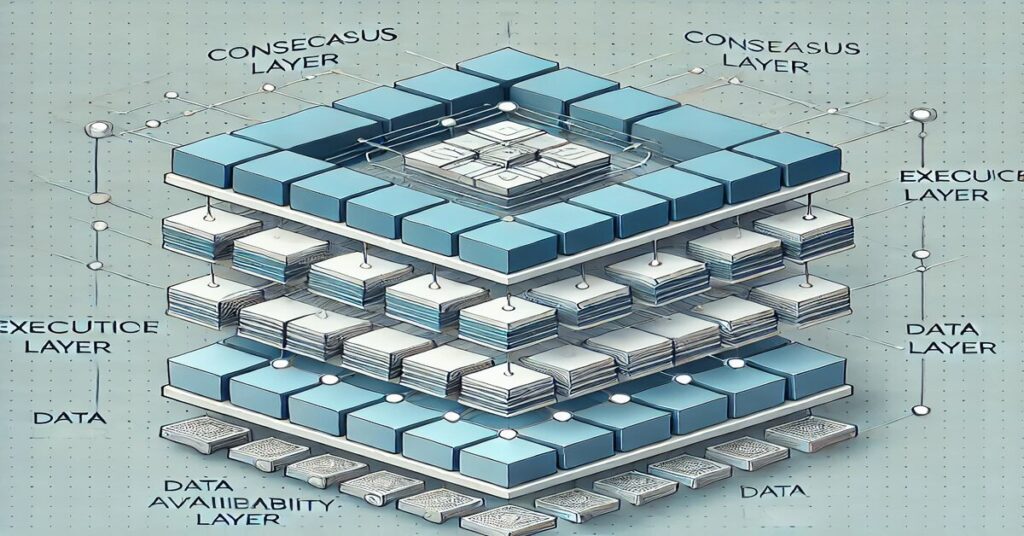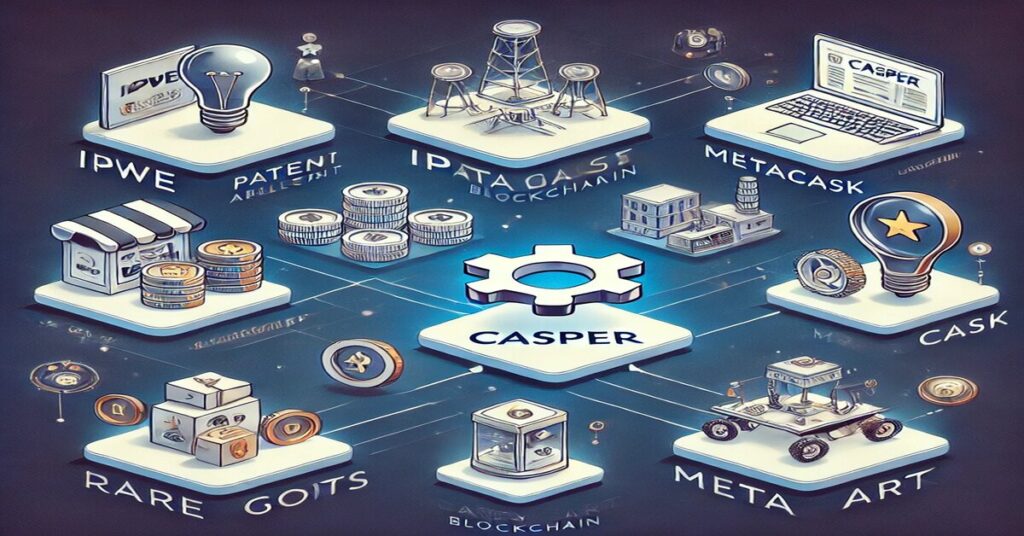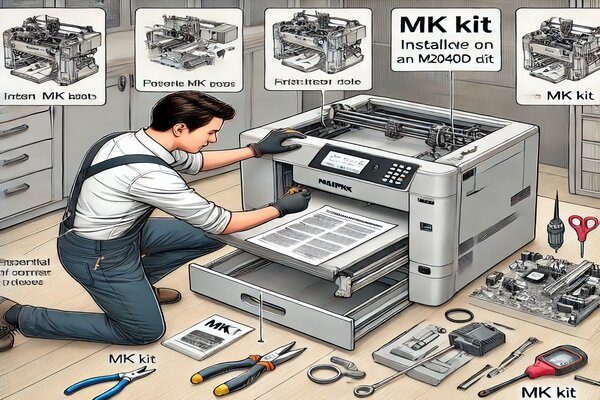The world of blockchain technology is continuously evolving, and so are the nuances that bind different blockchain architectures together. One architecture that Casper has identified as a good candidate and is being pursued in parallel by another team: the ‘modular blockchain’.
But what does it even mean for a blockchain to be modular and why should you give two wet farts??? In this article, we shall take a deeper look at Casper in order to elaborate on its modularised nature and why these properties make the project different from what present day blockchains are accustomed.
Understanding Modular Blockchains

But to understand what makes Casper a modular blockchain, lets first dissect the term “modular blockchain”.
Fundamental of Blockchain Architecture
Most of the traditional blockchains, like Bitcoin or Ethereum have a monolithic architecture. It implies that all functionalities i.e consensus, data storage and execution are intertwined together. While this simplicity is beneficial, it leads to scalability and flexibility issues as the network grows.
A modular blockchain, conversely breaks these core functions up into distinct layers or modules. This allows developers to seamlessly upgrade, optimize and scale each part of the entire stack independently. This structure provides performance, great availability, elasticity and fault-tolerance.
Building blocks of a modular blockchain
In other words, at its root Casper is a modular blockchain composed of multiple layers with specific responsibilities.
- The Consensus Layer: As the name itself suggests this layer is responsible for making sure that all participants agree to which state belongs on next.
- Execution Layer: which performs transactions processing and smart contracts implementation.
- Data Availability Layer: The data that is needed to validate transactions can be accessed via this layer.
This modular approach allows Casper to scale and change more easily over time as the demands on it evolve, its community turns towards other primitives or technology changes.
What Makes Casper Stand Out?
Now, with the general concept of modular blockchains out of the way let us explore what specifically makes Casper a good example.
Enhanced Scalability and Interoperability

Scalability: Perhaps the biggest problem in this technology as of now is its scalability. Traditional blockchains could show degradation in performance as user demand increases Casper is designed in a modular manner such that the scaling of each component can be done in isolation. In other words, if there is an unexpected spike in the number of transactions being carried through to the blockchain then execution layer can be scaled up without having any impact on consensus layer. This makes it not only efficient but also enables Casper to easily handle huge amounts of work.
In addition, this allows us to have interoperability with other chains. It will facilitate cross-chain interactions on other chains, so Casper is effectively multiuse.
Upgradable Smart Contracts
Old blockchain out there would never let you change a smart contract once it has been deployed. This can be a major inconvenience if problem occurs or updates needed. However, on the plus side; Casper deals with this by permitting smart contracts to be upgraded post deployment. This is important for developers and businesses want the ability to support, improve on their applications over time.
Having the shocking experience of deploying a new application on Casper, to then having a bug in your smart contract just running months later. Rather than being forced to redeploy it which can be a time-consuming process, you are able to update the deployment itself — saving significant time and costs in addition to improving security.
Separation of Consensus and Execution Layers
A second defining characteristic of Casper is the clean division between consensus and execution layers. This thing allows all nodes to get passed down with the Single logical instance of truth using fault-tolerant — Byzantine Fault Tolerance (BFT) protocol and also Proof-of-stake(PoS). This combination provides a safe and flexible decision mechanism.
The execution layer, on the other hand is accountable for transaction and smart contract processing. Casper reserves the right to adjust one of these layers without disturbing the other by keeping them separate. With this modular method, Casper can process around 100 times more transactions than a regular blockchain by processing several-of the operations off the main chain.
Customizable Execution Environments:
Each application has unique demands, and Casper facilitates this with a way of tailoring execution environments. For example, execution parameters for a financial platform will be different from those of the gaming application. This flexibility means that developers have more control over the way their Docker applications can be optimized for performance and scalability.
Real-World Applications of Casper

The modular architecture of Casper is more than just theoretical; it has practical implications in a variety of industries. There are some clear examples on this.
1. IPwe
IPwe is a Casper-integrated global patent management platform for transparent and efficient patented technology usage. IPwe has implemented Casper to quicken the patent procurement process, resulting in considerable time and cost savings for its customers. By utilizing Casper, IPwe can onboard more than 300 new clients in just a few months.
2. Metacask
Metacask wants to bring the ledger of transactions with identifiers of assets using Casper so that one will be able to record every transaction and asset definitely true on it by utilizing important info. Committing to security in this way allows Metacask to stand out as a sound choice for investors who value the safety and legitimacy of their investments.
3. Wise.Art
Wise in the luxury sector Art is an offering on Casper blockchain utilizing it for its digital authenticating platform (your collection). This integration will provide buyers and sellers with the ability to validate non-fungible tokens (NFTs) that are minted on Casper’s blockchain, enabling clear-cut recordkeeping for all collectibles from this point forward.
Conclusion
With its modular architecture, Casper stands out as a front-runner in the new generation of blockchains. This architecture solves a number of problems facing traditional blockchains, and allows Casper to be flexible enough for everything from low-power devices that want access to the global market(for reasons we can get into at another time) all the way up to huge entities just looking for confident finality.
As the blockchain landscape continues to expand at an increasing pace, adopting modular designs like Casper could greatly improve how we can make use of and interact with this tech. If you are thinking about blockchain development, or anything related to the investments in a project on Blockchain Casper is there with an optimistic backbone.



